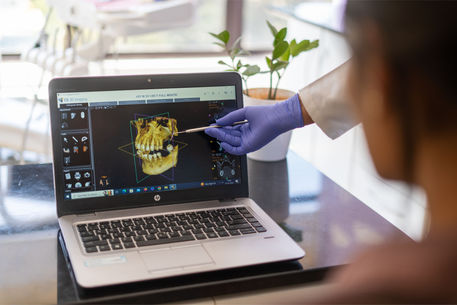
Implant Dentistry
At our clinics, dental implant treatments include:
Implant Systems For Tooth Replacement
Dental implants are semi-permanent bio-inert and bio-compatible tooth replacement systems made of titanium.
After studying the bone morphology with 3D bone scans, the implants are placed 1-2 mm below the crest of your bone with local anesthesia. The implant takes 4-6 months to fuse with the adjacent bone through a process called "osseointegration."
This creates a stable foundation for a functional component, which could be a crown(single unit), bridge (multiple units), or denture base (entire complement of teeth), which enables the patient in effective mastication.
Sinus Lifts:
Indirect and Direct
A sinus lift involves surgically creating an opening in the lateral wall of the maxillary sinus and then gently lifting the Schneiderian membrane to facilitate placing the implant of a suitable length.
Guided Implant Surgery /
Digital Implantology
In guided dental surgery, a dental laboratory uses the CBCT scans and creates a digital custom surgical guide.
This guide is then used during the surgery and it helps the surgeon to ensure that the implants are placed at the correct location, depth, and angle.
Guided Bone Regeneration
(GBR)
The procedure of GBR is used to increase bone volume in the areas with bone resorption due to long-standing loss of tooth/teeth.
In long-standing edentulous areas, usually, there is bone resorption which makes it difficult to place implants and also affects long-term stability.
GBR procedure increases bone volume, thus facilitating implant placement and long-term stability.






